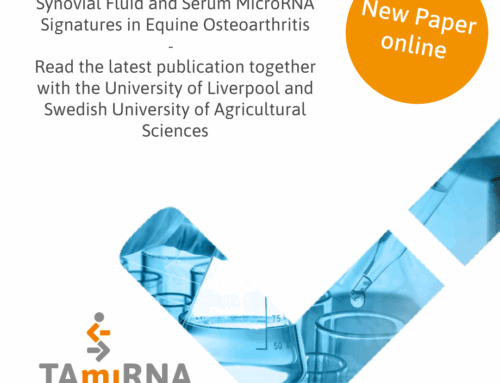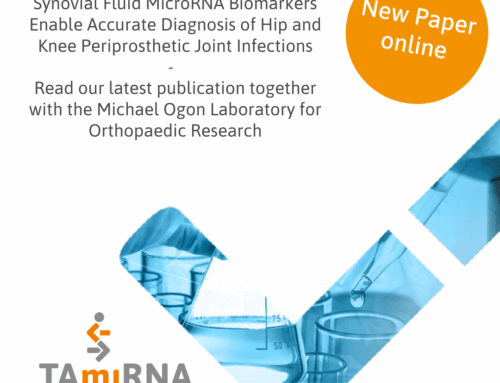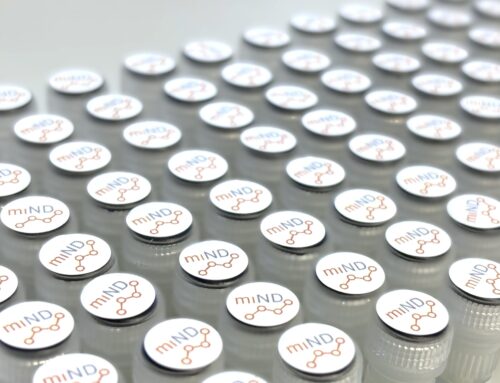Vienna, Austria – November 2025
TAmiRNA scientist have contributed significantly to a new study published by the Ludwig Boltzmann Institute for Traumatology, which is titled “Distinct miRNA profiles in human amniotic tissue and its vesicular and non-vesicular secretome”. The article was published in Frontiers in Cell and Developmental Biology on October 29th 2025.
Human amniotic membrane (hAM) has been used in tissue regeneration and wound healing applications. In this study, the miND® small RNA-sequencing workflow was applied to generate fresh insights into the microRNA composition of two spatially and physiologically distinct regions of the human amniotic membrane (hAM) and its secreted extracellular vesicles (EVs) and protein-bound miRNAs. The work highlights how advanced analytical workflows can uncover tissue- and secretion-specific miRNA signatures with implications for regenerative medicine.
TAmiRNA contributed analytical expertise and technologies to the study, including Next-Generation Sequencing (NGS) of small RNAs, miND® Spike-in controls for absolute quantification, and advanced EV characterization.
Key findings of the study
- The researchers compared placental and reflected regions of human amniotic membrane (hAM) at both tissue and secretome levels – distinguishing between EV-associated and protein-bound miRNA fractions.
- EVs were characterized using size-exclusion chromatography (SEC), nanoparticle tracking analysis (NTA), and fluorescence flow cytometry, confirming the presence of small CD81-positive vesicles (< 200 nm).
- Small RNA sequencing revealed that miRNAs accounted for 15–40 % of small RNA reads in tissues, 2–15 % in protein-bound fractions, and 0.3–1.2 % in EV fractions.
- Unsupervised clustering clearly separated tissue, EV, and protein-bound miRNA profiles and even distinguished between the two hAM regions.
- Functional enrichment analyses (GO terms) indicated that EV-associated and tissue miRNAs are linked to smooth muscle cell proliferation and differentiation, while protein-bound miRNAs relate more to connective tissue development, chondrocyte differentiation, and glial cell functions.
- Correlation analyses identified specific miRNAs (e.g., hsa-let-7c-5p, hsa-miR-574-5p) selectively released from the amniotic membrane, highlighting potential candidates for regenerative applications.
Full article available at:
👉 Frontiers in Cell and Developmental Biology
TAmiRNA’s contribution
TAmiRNA played a central role in the analytical workflow, providing specialized services that ensured reproducible, quantitative, and biologically meaningful results:
- Next-Generation Sequencing (NGS) of small RNAs – TAmiRNA performed complete library preparation, sequencing, and quality control (using RealSeq Biofluids kits and Illumina NovaSeq technology).
- miND® Spike-in controls – The use of TAmiRNA’s proprietary miND® Spike-in standards enabled absolute quantification of miRNAs by linear regression, ensuring robust comparability across fractions.
- Extracellular Vesicle (EV) characterization – TAmiRNA supported the analysis of EVs, providing high-confidence differentiation between EV-associated and protein-bound miRNAs.
Together, these technologies enabled precise measurement of miRNA release patterns and improved understanding of how the amniotic membrane secretes distinct miRNA cargo via vesicular and non-vesicular pathways.
Why this matters
Regenerative medicine increasingly focuses on secreted factors—particularly EV-associated miRNAs—as key mediators of tissue repair and cell communication. However, differentiating vesicular from non-vesicular miRNA pools requires highly controlled analytical methods.
Looking ahead
These findings pave the way for future studies on region-specific amniotic tissues as sources of therapeutic miRNAs. TAmiRNA’s platform lays the foundation for robust, reproducible quantification of extracellular miRNAs in diverse biological matrices—supporting preclinical and clinical research in regenerative medicine, diagnostics, and drug development.












